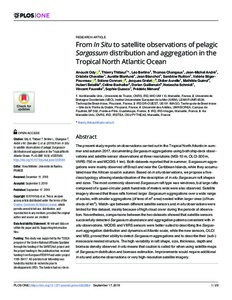| dc.contributor.author | Ody, Anouck | |
| dc.contributor.author | Thibaut, Thierry | |
| dc.contributor.author | Berline, Leo | |
| dc.contributor.author | Changeux, Thomas | |
| dc.contributor.author | Andre, Jean-Michel | |
| dc.contributor.author | Chevalier, Cristèle | |
| dc.contributor.author | Blanfune, Aurelie | |
| dc.contributor.author | Blanchot, Jean | |
| dc.contributor.author | Ruitton, Sandrine | |
| dc.contributor.author | Stiger-Pouvreau, Valerie | |
| dc.contributor.author | Connan, Solène | |
| dc.contributor.author | Grelet, Jacques | |
| dc.contributor.author | Aurelle, Didier | |
| dc.contributor.author | Guene, Mathilde | |
| dc.contributor.author | Bataille, Hubert | |
| dc.contributor.author | Bachelier, Céline | |
| dc.contributor.author | Guillemain, Dorian | |
| dc.contributor.author | Schmidt, Natascha | |
| dc.contributor.author | Fauvelle, Vincent | |
| dc.contributor.author | Guasco, Sophie | |
| dc.contributor.author | Menard, Frederic | |
| dc.coverage.spatial | Tropical North Atlantic | en_US |
| dc.date.accessioned | 2020-04-09T23:47:47Z | |
| dc.date.available | 2020-04-09T23:47:47Z | |
| dc.date.issued | 2019 | |
| dc.identifier.citation | Ody, A.; Thibaut, T.; Berline, L.; Changeux, T.;
Andre,´ J-M.; Chevalier, C.; et al (2019) From In Situ
to satellite observations of pelagic Sargassum
distribution and aggregation in the Tropical North
Atlantic Ocean. PLoS ONE 14(9): e0222584. 29pp. DOI:
https://doi.org/10.1371/journal.pone.0222584 | en_US |
| dc.identifier.uri | http://hdl.handle.net/11329/1265 | |
| dc.identifier.uri | http://dx.doi.org/10.25607/OBP-780 | |
| dc.description.abstract | The present study reports on observations carried out in the Tropical North Atlantic in summer
and autumn 2017, documenting Sargassum aggregations using both ship-deck observations
and satellite sensor observations at three resolutions (MSI-10 m, OLCI-300 m,
VIIRS-750 m and MODIS-1 km). Both datasets reported that in summer, Sargassum aggregations
were mainly observed off Brazil and near the Caribbean Islands, while they accumulated
near the African coast in autumn. Based on in situ observations, we propose a fiveclass
typology allowing standardisation of the description of in situ Sargassum raft shapes
and sizes. The most commonly observed Sargassum raft type was windrows, but large rafts
composed of a quasi-circular patch hundreds of meters wide were also observed. Satellite
imagery showed that these rafts formed larger Sargassum aggregations over a wide range
of scales, with smaller aggregations (of tens of m2 area) nested within larger ones (of hundreds
of km2). Match-ups between different satellite sensors and in situ observations were
limited for this dataset, mainly because of high cloud cover during the periods of observation.
Nevertheless, comparisons between the two datasets showed that satellite sensors
successfully detected Sargassum abundance and aggregation patterns consistent with in
situ observations. MODIS and VIIRS sensors were better suited to describing the Sargassum
aggregation distribution and dynamics at Atlantic scale, while the new sensors, OLCI
and MSI, proved their ability to detect Sargassum aggregations and to describe their (sub-)
mesoscale nested structure. The high variability in raft shape, size, thickness, depth and
biomass density observed in situ means that caution is called for when using satellite maps
of Sargassum distribution and biomass estimation. Improvements would require additional
in situ and airborne observations or very high-resolution satellite imagery. | en_US |
| dc.language.iso | en | en_US |
| dc.rights | Attribution 4.0 International | * |
| dc.rights.uri | http://creativecommons.org/licenses/by/4.0/ | * |
| dc.subject.other | Satellite sensing | en_US |
| dc.subject.other | Shipboard observation | en_US |
| dc.subject.other | Sargassum | en_US |
| dc.subject.other | Seaweed | en_US |
| dc.title | From In Situ to satellite observations of pelagic Sargassum distribution and aggregation in the Tropical North Atlantic Ocean. | en_US |
| dc.type | Journal Contribution | en_US |
| dc.description.refereed | Refereed | en_US |
| dc.format.pagerange | 29pp. | en_US |
| dc.identifier.doi | https://doi.org/10.1371/journal.pone.0222584 | |
| dc.subject.parameterDiscipline | Parameter Discipline::Biological oceanography::Macroalgae and seagrass | en_US |
| dc.bibliographicCitation.title | PLOS One | en_US |
| dc.bibliographicCitation.volume | 14 | en_US |
| dc.bibliographicCitation.issue | 9, Article e0222584 | en_US |
| dc.description.sdg | 14.2 | en_US |
| dc.description.eov | Macroalgal canopy cover and composition | en_US |
| dc.description.bptype | Best Practice | en_US |
| dc.description.bptype | Manual (incl. handbook, guide, cookbook etc) | en_US |
| obps.contact.contactemail | thierry.thibaut@univ-amu.fr | |
| obps.resourceurl.publisher | https://journals.plos.org/plosone/article?id=10.1371/journal.pone.0222584 | en_US |
 Repository of community practices in Ocean Research, Applications and Data/Information Management
Repository of community practices in Ocean Research, Applications and Data/Information Management

